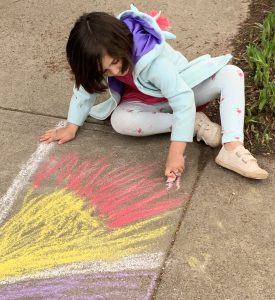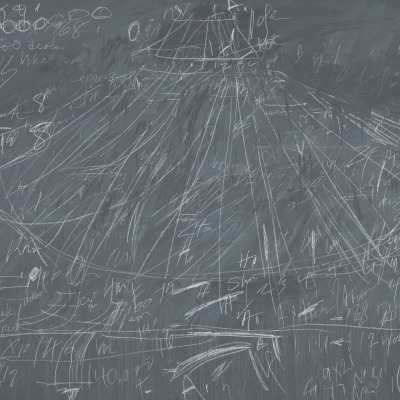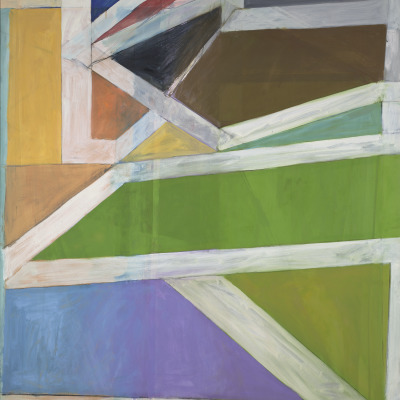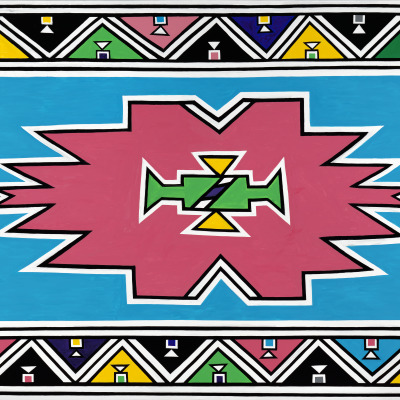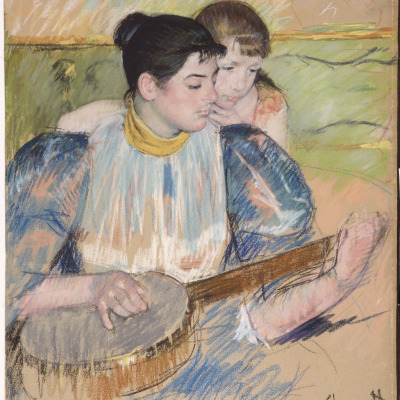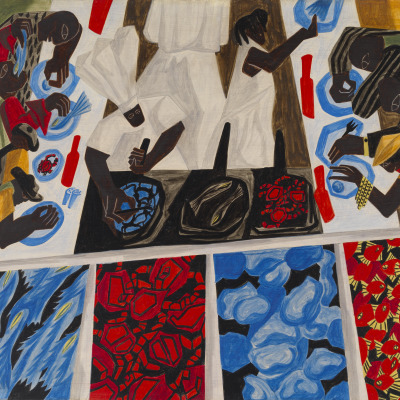Let's start with Virginia's own Cy Twombly who made this deceptive oil painting in 1968.
Almost everyone who sees this painting in the Lewis 20th Century galleries is intrigued by how much it resembles a black board with its chalk-like marks and "erasures."
The vibrant, freewheeling compositions of Twombly often relate to historical and mythological subjects. In Synopsis of a Battle, the marks are actually drawn and painted signs and symbols that refer to a specific event—the Battle of Issus (333 BC), in which Alexander the Great defeated Darius of Persia’s much larger army. Let your eyes wander around this artwork and see what kinds of numbers, words, lines, and shapes you can find.
Among the work’s cryptic, graffiti-like markings, the words “Issus” (top left) and “flank” (left and right) provide clues to the painting’s military subject. The radiating, or flanking, form suggests diagrams of troop movements.
Chalk it Up Challenge: Think of an event from ancient history that YOU know about. Can you make an intriguing sidewalk chalk drawing that calls it to mind? What kinds of marks might you use? Are there words, numbers, shapes, or lines that could give a viewer clues to the event you are referencing in your artwork?
